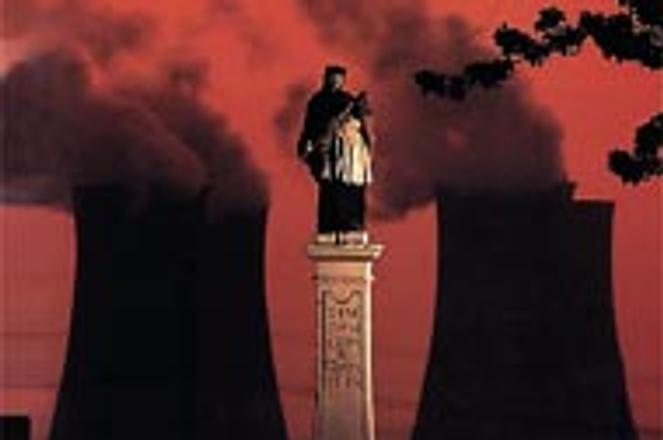Praying for safety. Jaslovské Bohunice (above) and Mochovce blend Russian and Western technology.von Bilderberg
Slovakia's energy future is centered around the technological development of the Mochovce nuclear power plant, 120 kilometers east of Bratislava. The project, likely to cost around 50 billion Sk ($1.6 billion), has always been hotly disputed for economic and safety reasons.
Long after the radioactive fallout ended, the political and public relations fallout from the 1986 Chernobyl disaster in Ukraine hangs like a pall over any discussion on atomic or nuclear reactors. Therefore, safety has been an increasingly pressing concern. According to Jozef Mišak, Chairman of the Slovak Nuclear Regulatory Authority, these concerns have caused completion costs to jump 20-fold in the past few years.
Assuming Mochovce becomes fully operational in 1998 or 1999, the plant will blend Russian and west European technology. "Mochovce will be the first nuclear reactor to bring together eastern (Russian) and western technology," Misak said. The result, he added, will be limited possibilities for accidents to happen and, most importantly, Western standards for radioactive containment if an accident does occur.
Misak is quick to point out that a Chernobyl-like accident is virtually impossible in Slovakia - either at Mochovce or at Jasovské Bohunice, about 80 kilometers northeast of Bratislava, which went into operation in 1979. Both are Vodovochy Energeticky Riaktor (water-water power reactors) or VVER, using water as both the coolant and the moderator of the fission process, whereas the Chernobyl-type reactor uses graphite (lead) as the moderator.
Briefly, the reaction process involves controlling fission (which creates the power) and neutron production (necessary for fission to take place). With a VVER reactor, the so-called "positive feedback" (where the reactor heated up through increased neutron production in response to fission malfunction) that led to the Chernobyl disaster will be replaced by a "fail-safe" system in which the reactor will gradually shut down if the process for nuclear fission starts to malfunction.
The environmental organization Greenpeace Slovakia, which is entirely dedicated to mothballing Mochovce and shutting down Jasovské Bohunice, is not satisfied that the safety of atomic reactors can be guaranteed. Compared to Western reactors, Greenpeace director Lubica Trubiniova said containment is virtually non-existent in Slovak nuclear energy production.
Greenpeace and nuclear-energy advocates do agree on one thing: these projects are so gargantuan in size and complexity, with timelines stretching so far into the future, that economic and technological factors are bound to change along the way. The situation at Mochovce has been no different.
Critics have argued for some time that Slovakia has had no intention of shutting down Bohunice once Mochovce is completed as was originally intended. This has now been confirmed by Miöak, as well as by Tibor Mikuö, director of Slovenské ElektrŠrne, among others. Bohunice, it is planned, will operate for its entire natural lifespan, which is until about 2005.
The reasons proponents say, are that there was more than a 140-percent cost increase in imported energy to Slovakia last year compared to 1995. If there is no overlap - when both Mochovce's first two blocks become operational and at least two Bohunice blocks remain operative - it would do nothing to alleviate this problem.
The pro-nuclear lobby argues that nothing else compares to this form of energy in terms of cost-efficiency, and that every form of energy production has its risk (the International Atomic Energy Agency has even revised earlier reports on the effects from Chernobyl that downplay long-term health risks). Greenpeace and the anti-nuclear lobby say that the economic arguments fail to take into consideration the costs of storage and/or disposal and that the long-term health risks are impossible to quantify.
Whoever is right, Slovakia has already made its choice in favor of using nuclear sources for energy for the next decade and years to come.


